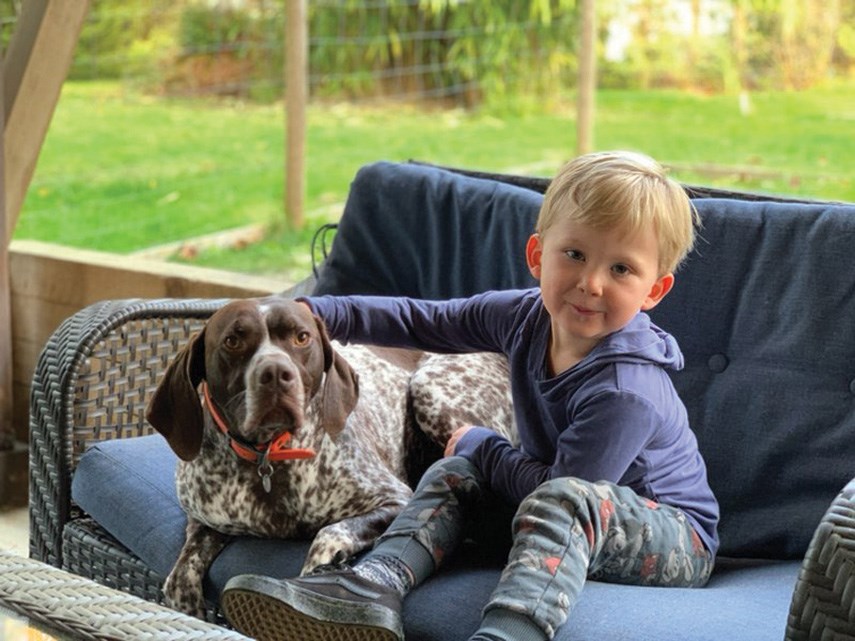My best friend growing up on the family farm was my dog Topper.
Topper was a very biddable dog. A mix of terrier and shepherd she put up with me painting her toenails, dressing her up in my clothing and was my first patient when my interest in being a veterinarian began to blossom.
Through these times, we not only became best friends but learned how to communicate with each other without speaking. I learned her body language when she wanted attention but more importantly, when she wasn’t feeling like any and wanted to be left alone.
Dogs and children can have a wonderful relationship but there has to be common-sense guidance when it comes to both the dog and a child.
Without proper guidance children often treat dogs as their peers and playmates. They will grab, hold and engage in close facial contact as a way of expressing their affection. And while this may make a touching Instagram photo, a dog may find this behaviour threatening and the result could be an unfortunate bite towards the child.
Dogs have a difficult time understanding children. They cry, scream, throw things, run around with arms flailing — basically they often act like a wounded animal. To a dog that can be very confusing as to how they should behave towards them.
Fortunately, there are many things that a parent can do to make sure children and dogs learn how to respect each other and remain safe and happy when they are together.
One thing I would like to stress to parents with children and dogs in the same household is to never, ever leave your child and dog alone in the same room. Both the child and the dog need to be supervised at all times to ensure the boundaries you set for interaction are not crossed.
Both the dog and the child must mind their manners. If you must leave the room, then place the dog or the child in a safe and segregated area.
Some boundaries you should be setting for your child are to never approach a dog when it is eating. It doesn’t matter how friendly Fido is or if it is a meal, a toy or a treat that the dog really likes. All dogs can show aggression as they protect an item from being taken away.
Let sleeping dogs lie. Give Fido a place of his own away from the activity of the home so he can rest properly and then teach the children to let the dog be.
I am sure we can all appreciate how irritating it is to be bothered when you are tired or woken up from a good nap. Dogs are no different.
Extra consideration needs to be heeded when dogs are injured, unwell, deaf or blind. A dog that is not well will feel vulnerable and likely to be more protective of its personal space. When Fido once tolerated having his ears rubbed, a growl or a snap of his jaws may result if he has an ear infection.
Teach children that a dog is not a stuffed toy. It should not be jumped on, have its ears or tail pulled. Teach children to be kind, gentle and considerate to all dogs and to treat them with respect.
Dogs have different ways of playing with each other and that does not often work with how children play with each other.
Dogs roughhouse while using their mouths, often resulting in play bites. These forms of play with children can result in obvious injury. So instead of rough play, teach children how to interact with dogs in a more leadership type of role such as using obedience, like a puppy-pushup routine or shake a paw or other fun tricks.
Be aware of your dogs’ moods when around children. If your dog looks uncomfortable with how a child is interacting with it, then separate them and give your dog some space by letting him go to a quiet spot where he feels safe. It may just be on the opposite side of the room where it can watch from a distance and then return to the interaction once it has regained its composure.
Never allow your child to approach a dog that they are unfamiliar with, be it in a public park or a dog park. Not all dogs are socialized well with children and you could be risking injury to your child by allowing that privilege. Always ask the owner first before approaching their dog.
By following clear boundaries and providing consistent guidance children and dogs can remain safe while developing a wonderful lifelong friendship.
Joan Klucha has been working with dogs for more than 20 years in obedience, tracking and behavioural rehabilitation. Contact her at [email protected].



